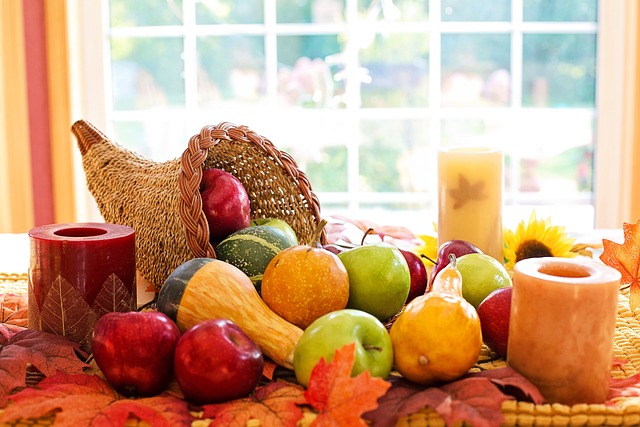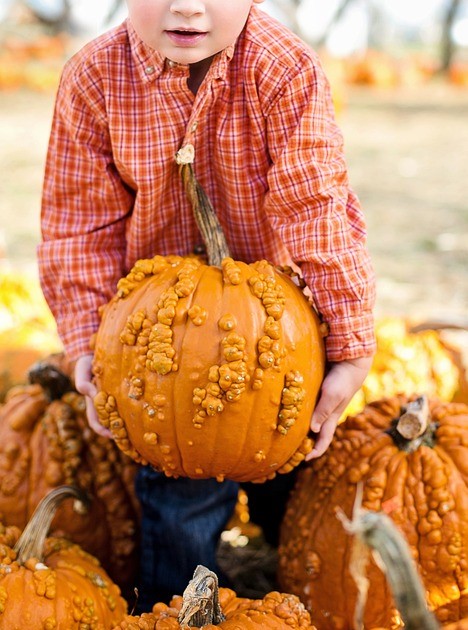For our May craft, I took a craft idea from Crafting Jeannie’s website on a flower craft
and modified it a bit for my students to create a garden. This craft enabled us to discuss
images in more detail and the textures of each item in our “garden.” The students
became the illustrators in this engaging project. I did not give them a pre-made “garden”
to look at, rather I expected them to listen to my words and look at the pictures in the
book.
“Teaching kids to plant seeds is helping them believe in tomorrow.” – Unknown
Materials
- Corrugated Cardboard Sheets
- Glue
- Paper towels (for messes/fingers)
- flower templates from Crafting Jeannie’s website
- Feel ‘n Peel Sheets Carousel of Textures
Skills practiced
- Listening skills
- Eye-hand coordination
- Attention to task
- Patience and perseverance
- Pincer grasp
- Bilateral coordination
- Squeezing
- Twisting/Turning glue
- Opening containers/bags
- Soliciting assistance
Warm-up activity
Planting a Rainbow
This sweet story talks about planting a garden with a mother and her daughter. A great way to discuss types of flowers (i.e. names, bulbs, seeds) and colors of the different flowers.
Where possible, we traveled outside the school campus to look at the gardens by the entrance. We talked about the colors and texture of the plants. While reading the book, I decided to add life like replicas of a plant growing. The way plants grow from seeds or bulbs into having stems and leaves become more real and conceptualized through this exploration.
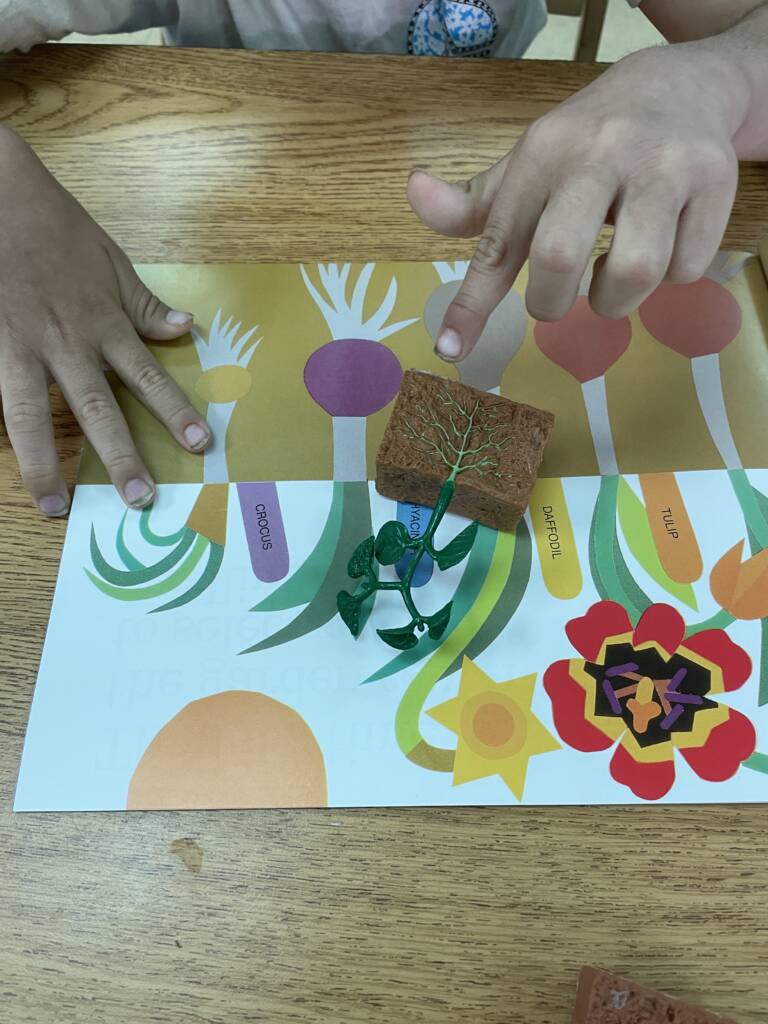
Activity 1
Spring Non-Identical Sorting Activities
This interactive sorting tool uses Velcro pieces to sort Spring topics (i.e. flower, grass, worms). Here, I can do errorless sorting with just one card and the correct responses for this card or I can do multiple cards depending on student ability. I have 16 different card choices to choose from. One of the things I really like about this set is that none of the choices are the same. Just like in the real world, everything has a variety of images to behold.
Activity 2
FUNZBO Flower Garden Building Toys
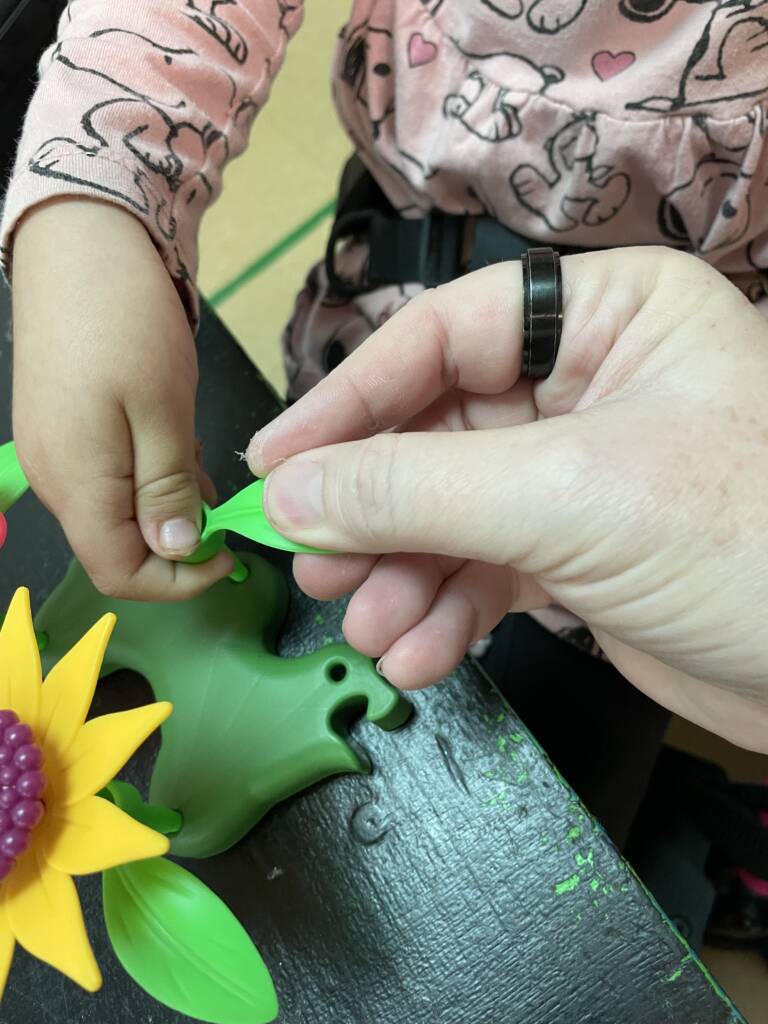
The students were able to build their own flowers in a “garden” using pieces from this kit to create it. This activity allowed the students to explore the parts of the flower in more detail and allowed them to be creative in creating their flower combinations. Due to different ability levels, assistance in building the flower was needed for several of my students, but they were all encouraged to practice those ever-important fine motor skills!
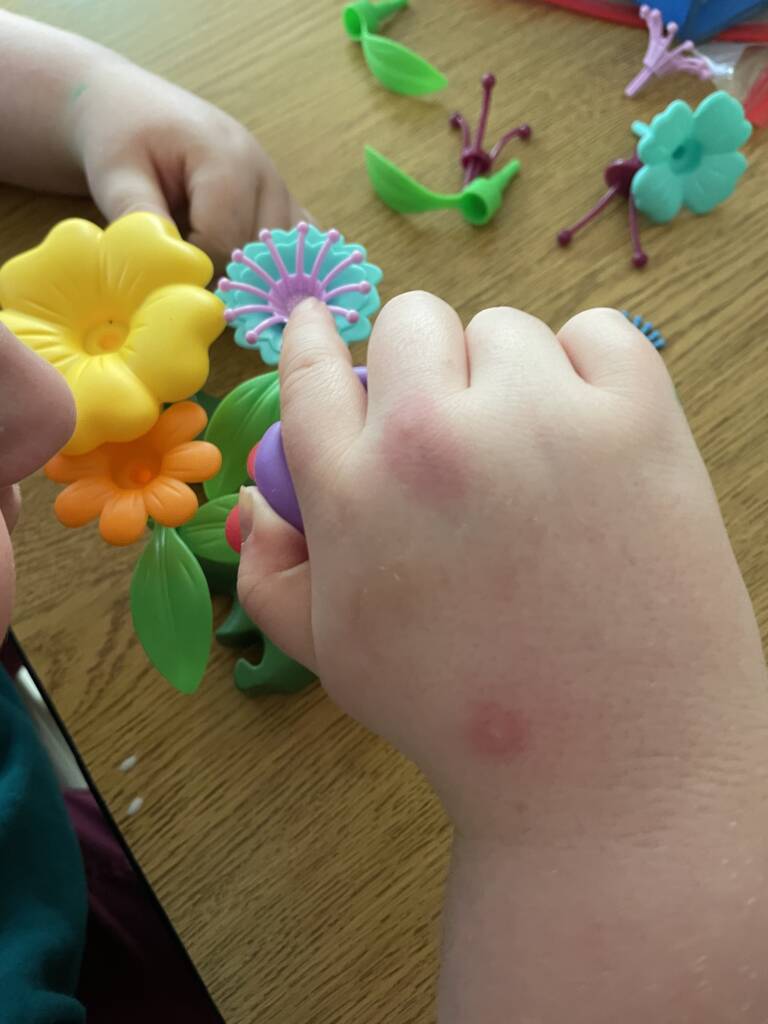
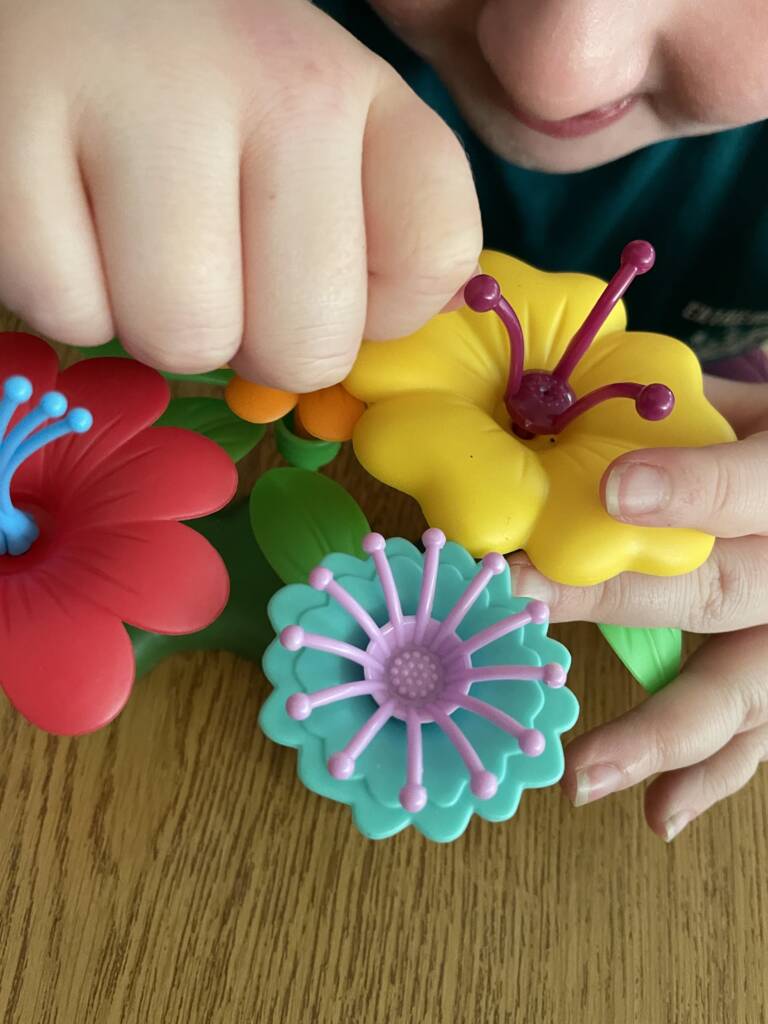
Activity 3
This book was free on Teacher Pay Teacher. I adapted the book to allow me to provide the student either errorless choice (only one choice available) to up to 3 choices. There are also two books in the link that I combined for my lessons. I put “What are the parts of a flower?” first with the last page being longer to allow me to add velcro choices. Turn that page, and the second book “What does a plant need?” starts. Again, the last page of this book is longer to allow for the addition of velcro choices.
Making the “garden”
All the pieces were pre-cut with different textures. The students had to determine what flower texture to use as the other textures were “set”. When possible, the students removed the sticker backing either independently or with support. The students had a bit of science with this craft unit as they learned the parts of a flower.
The students started by putting the “stems” down. The flowers came next. We learned that a couple of the textures that were originally chosen don’t stick well. This gave them the opportunity for additional gluing practice. The “pistil” came next followed by the “grass”.
Extension activities
- Plant seeds/bulbs/flowers with family; seed packets sent home with craft Wildflower Seed Packets
- Create a nature journal
- Go on a nature walk
- Create a nature board https://www.pathstoliteracy.org/nature-board/
- Create a nature mural
- Field trip to a nursery
- Paint rocks to decorate the garden
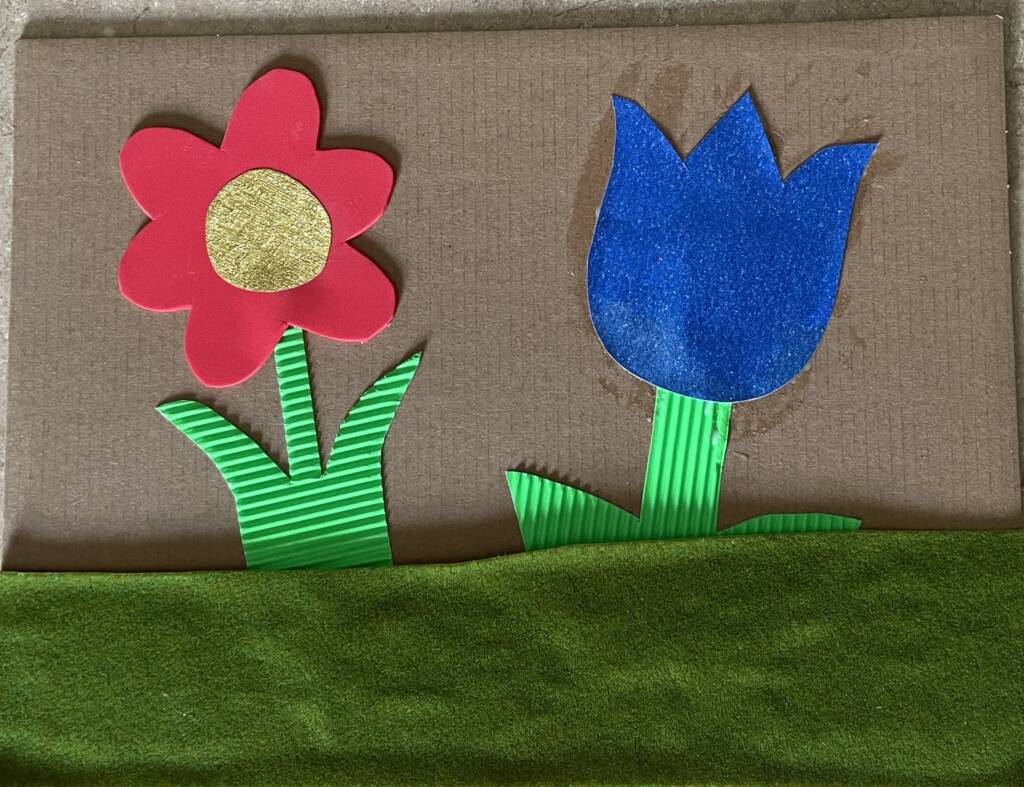
Read more
“Growing a Rainbow”: Accessible Ideas for Children with Multiple Disabilities
Preschool children with visual impairment can learn basic concepts hands-on activities, and the book can be made accessible through a story box, tactile symbols, picture symbols, and a talking book.



